Zirconia Crown: Types, Advantages, and Disadvantages
Zirconia crown is widely chosen by dentists for their patients as a reliable alternative to traditional PFM (Porcelain-Fused-to-Metal), PFZ (Porcelain-Fused-to-Zirconia), or full-metal crowns. These restorations are favoured for their exceptional strength, durability, and superior esthetics.
Many clinicians opt for zirconia crowns in single-unit restorations, especially in cases where both function and appearance are critical. For optimal outcomes, zirconia crowns require a shoulder or chamfer margin preparation, ensuring a precise fit and long-term stability.
What is a Zirconia crown?
Zirconia crowns are a newer material used in modern ceramic dental restorations — more specifically, they are made from zirconium oxide. Known for their superior strength, zirconia crowns are harder than porcelain and some metal alloys, and are less prone to developing sharp edges from natural wear over time.
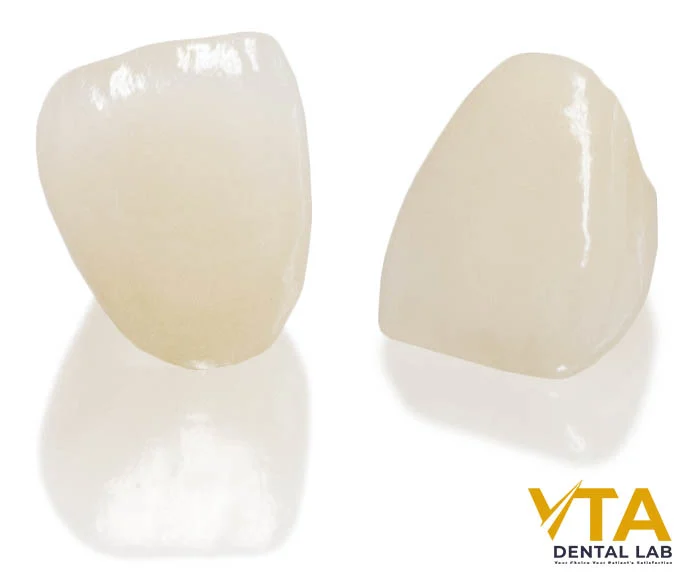
Zirconia crowns are made from durable monolithic ceramic, offering excellent fracture resistance
Compared to traditional porcelain crowns, zirconia crowns exert less pressure and cause less wear on opposing teeth. Porcelain, on the other hand, can sometimes act like sandpaper, gradually eroding the enamel of the opposing dentition.
For these reasons, many dentists recommend zirconia crowns as a reliable solution for dental restorations, offering long-term durability, safety, and minimal impact on surrounding teeth.
According to a 2021 study by the American Dental Association (ADA), 99% of dentists reported using this crystalline mineral, zirconia, in natural tooth restorations. Beyond its smooth surface, zirconia offers a range of outstanding advantages, including high strength, excellent fracture resistance, and exceptional biocompatibility with the human body.
Types of Zirconia Crowns
Most dental clinics are shifting from traditional PFM (Porcelain-Fused-to-Metal) crowns to zirconia crowns for fixed restorations. Thanks to their high strength, near-indestructibility, and excellent esthetics, zirconia has become a popular choice for crafting dental restorations. Below are the three most commonly used types of zirconia crowns in dental prosthetics:
1. Full Solid Zirconia
Made from a single block of zirconia, this type offers the highest flexural strength, typically ranging from 1000 to 1200 MPa. Its superior durability makes it ideal for posterior restorations, where biting forces are greatest. While its esthetic qualities may be lower compared to layered options, newer generations of full zirconia have improved significantly in translucency and shade matching.
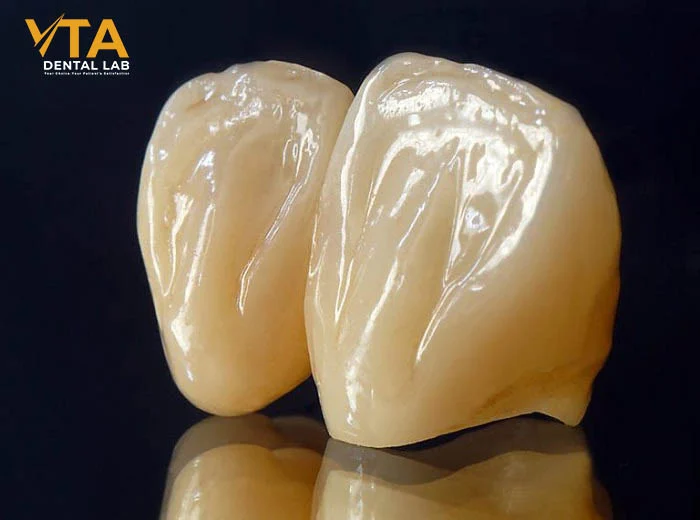
Full zirconia crowns are meticulously crafted and suitable for restorations in all regions of the mouth
2. High Translucency Zirconia (HT Zirconia)
Designed with enhanced translucency to better mimic natural teeth, HT zirconia is most suitable for anterior restorations where esthetics are a top priority. Due to adjustments in its crystalline structure to increase translucency, its flexural strength is reduced to approximately 600–800 MPa. Despite the lower strength, it remains durable enough for most single-unit anterior cases, provided they are not subject to excessive occlusal load.
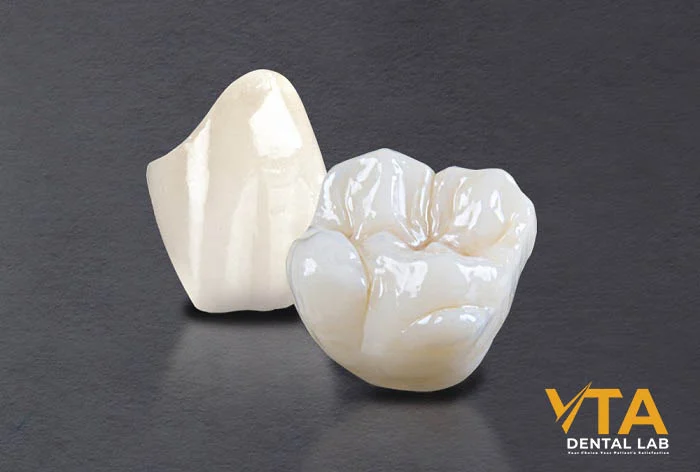
High Translucent Zirconia (HT Zirconia) is widely favored for anterior restorations due to its superior translucency
3. Layered Zirconia
Layered Zirconia combines a zirconia core (typically 900–1100 MPa) with a porcelain veneering layer to achieve optimal esthetic results. The veneering porcelain allows for a more natural appearance with lifelike translucency and color gradation, making it ideal for highly esthetic zones. However, the outer porcelain is more fragile and may be prone to chipping or delamination if not fabricated correctly or in patients with parafunctional habits such as bruxism.

Layered zirconia features a dual-layer structure that combines strength with enhanced aesthetics
Advantages of Choosing a Zirconia Crown in Modern Dentistry
Zirconia crowns are known for their high biocompatibility, thanks to their smooth surface that minimizes plaque accumulation. Layered zirconia crowns, while featuring an outer ceramic layer that is not as strong as the zirconia core, are specially engineered to bond seamlessly with the substructure, making incidents of chipping or fracture extremely rare. This material also supports healthy soft tissue response, contributing to long-term success in both function and esthetics.
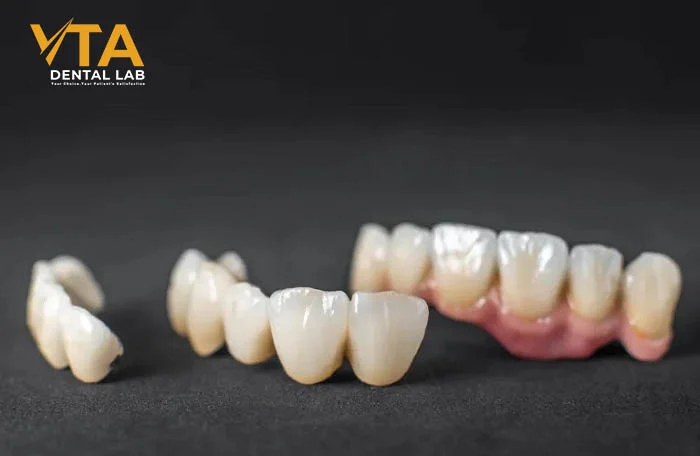
Zirconia is a highly biocompatible material, making it ideal for a wide range of dental restorations
One of zirconia’s greatest strengths is its customizability. The material can be fabricated in multiple ways to meet the unique clinical and esthetic needs of each patient. This high degree of customization ensures a precise fit, reducing the risk of marginal discrepancies and improving overall patient outcomes.
Zirconia is also metal-free, which helps prevent the dark lines that may appear along the gum line in patients with thin gingival biotypes—an issue often encountered with PFM restorations due to gingival recession. This makes zirconia an ideal option for patients seeking long-lasting, esthetic solutions.
Thanks to its high opacity, zirconia can effectively block underlying discoloration and is available in a wide range of shades, allowing it to blend harmoniously with the surrounding natural dentition.
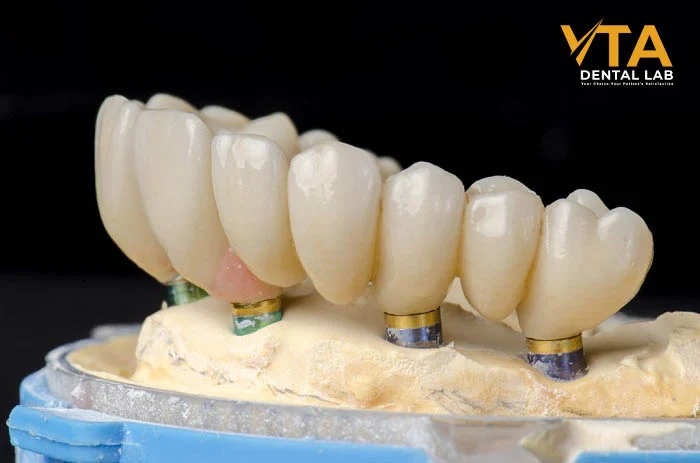
Each crown surface is carefully characterized to replicate natural grooves and anatomy
Zirconia crown is designed and fabricated using advanced CAD/CAM technology, ensuring an accurate fit and superior esthetics. This digital precision significantly reduces chair time for adjustments and final cementation.
These restorations can be cemented using conventional protocols. The process typically involves applying a zirconia primer to the crown, followed by a bonding agent on the prepared tooth, and finishing with dual-cure resin cement to ensure strong, reliable adhesion.
Lastly, zirconia crowns offer enhanced patient comfort, as they do not conduct heat or cold like traditional PFM crowns, minimizing temperature sensitivity and making them more comfortable for daily use.
>> Read more: PFM Crowns vs Zirconia Crowns: Which Is Better for Your Patients?
The Disadvantages of Zirconia Crowns to Consider
While zirconia crowns offer numerous advantages, there are still some potential drawbacks that clinicians and patients should be aware of:
Bulkiness in Early Generations
Earlier generations of zirconia crowns were typically thicker than other types of restorations, such as PFM crowns. This added thickness sometimes resulted in a slightly bulky appearance, especially in cases requiring minimal tooth reduction. However, with recent advancements in material science and CAD/CAM technology, newer zirconia options are now available in thinner, more esthetic forms, meeting modern clinical demands.
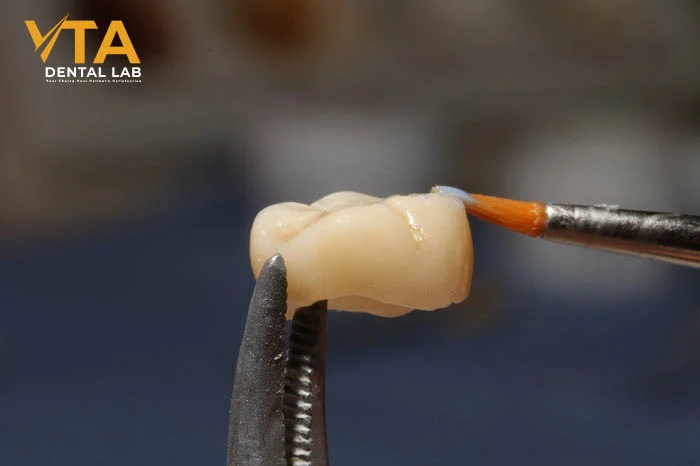
At VTA, we use CAD/CAM technology to ensure precision and consistency in every restoration
Difficulties in Adjustment or Modification
Compared to other materials like porcelain, zirconia can be more challenging to adjust once it has been fabricated and cemented. Minor modifications—such as occlusal adjustments or reshaping—can be difficult and sometimes impossible without compromising the integrity of the restoration. In some cases, a new crown may be required even for minor changes. This limitation highlights the importance of accurate digital impressions using intraoral scanners, which reduce the margin of error and enhance the overall fit. That’s why working with a digital dental lab becomes crucial for treatment success.
Abrasion to Opposing Dentition
Due to its high strength and hardness, zirconia has raised some concerns about causing wear on opposing teeth. However, this risk can be mitigated through routine occlusal checks and regular follow-ups, as well as proper polishing and glazing of the restoration surface.
In Conclusion
Although zirconia crowns present some disadvantages that must be carefully considered, they remain a widely accepted solution across multiple dental disciplines due to their exceptional esthetics, superior strength, and outstanding biocompatibility.
Thanks to ongoing advancements in dental technology, such as CAD/CAM systems, precision milling, and high-temperature sintering techniques, zirconia crowns now offer better fit, enhanced accuracy, and improved esthetics than ever before.